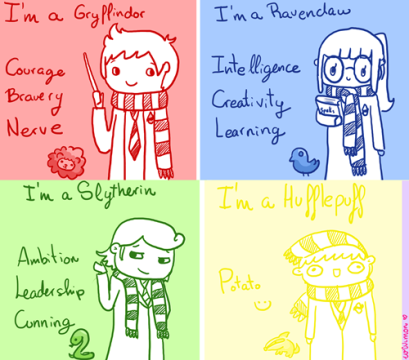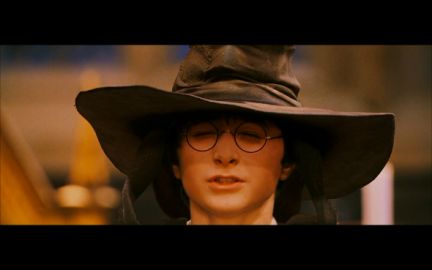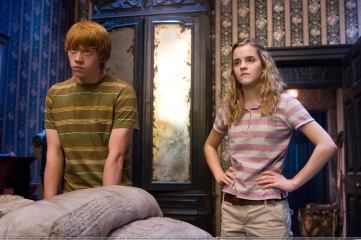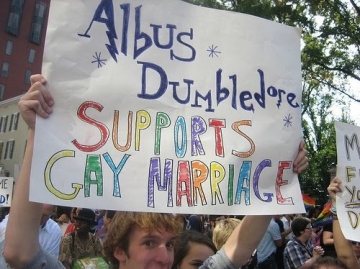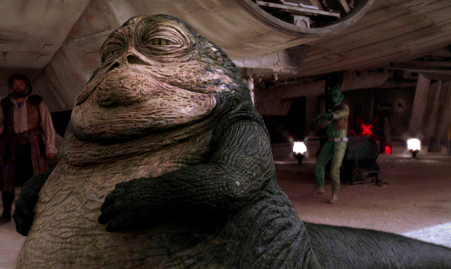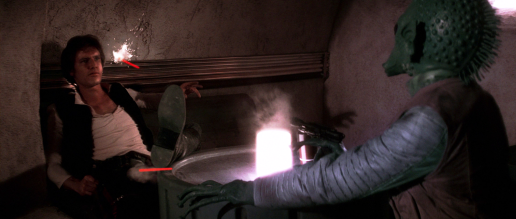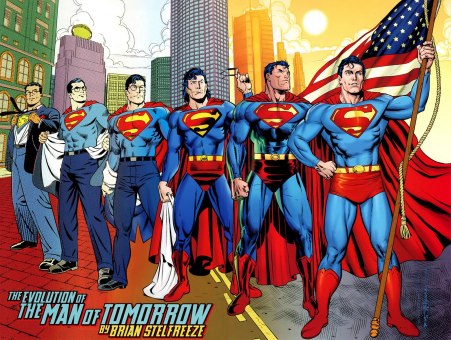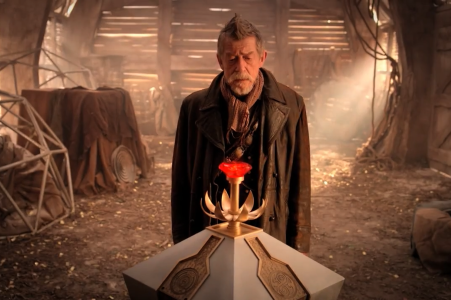Poor Hufflepuff. You are truly the least appreciated of the Hogwarts houses. The ambitious go to Slytherin, the wise go to Ravenclaw, the brave go to Gryffindor, and Hufflepuff gets the leftovers.
The Sorting Hat’s song from The Order of the Phoenix seems to say as much:
Said Slytherin, “We’ll teach just those
Whose ancestry’s purest.”
Said Ravenclaw, “We’ll teach those whose
Intelligence is surest”
Said Gryffindor, “We’ll teach all those
With brave deeds to their name.”
Said Hufflepuff, “I’ll teach the lot
And treat them just the same.”
On the surface, it seems that Helga Hufflepuff got stuck with the students that nobody else wanted. But if we read on, we see that Hufflepuff was actually the wisest of the four founders. The Sorting Hat continues:
So Hogwarts worked in harmony
for several happy years,
but then discord crept among us
feeding on our faults and fears.
The Houses that, like pillars four
had once held up our school
now turned upon each other and
divided, sought to rule.
And for a while it seemed the school
must meet an early end.
what with dueling and with fighting
and the clash of friend on friend.
And at last there came a morning
when old Slytherin departed
and though the fighting then died out
he left us quite downhearted.
And never since the founders four
were whittled down to three
have the Houses been united
as they once were meant to be.
I propose that Hufflepuff didn’t “teach the lot and treat them just the same” because she got stuck with the leftovers; she did this because placing greater value on certain characteristics and separating these people into different groups was antithetical to her character. “Take the lot and treat them just the same” is the value that is at the core of every Hufflepuff’s character. Just as Slytherins are driven by ambition, Gryffindors by courage, and Ravenclaws by intelligence, Hufflepuffs are driven by justice, equality, and inclusivity. In a word, Hufflepuffs are driven by the most powerful magic in the world: love.
Love can’t conceive of closing the door to anyone, but instead welcomes everyone in and “treats them just the same.” If you ask me, if it had been up to Hufflepuff, Hogwarts would not have been divided into houses at all, and the conflict between Gryffindor and Slytherin, and all the historical fallout of their rift, could have been avoided.
The Sorting Hat itself acknowledges the wisdom of Hufflepuff:
And now the Sorting Hat is here
and you all know the score:
I sort you into Houses
because that is what I’m for.
But this year I’ll go further,
listen closely to my song:
though condemned I am to split you
still I worry that it’s wrong,
though I must fulfill my duty
and must quarter every year
still I wonder whether sorting
may not bring the end I fear.
Oh, know the perils, read the signs,
the warning history shows,
for our Hogwarts is in danger
from external, deadly foes
and we must unite inside her
or we’ll crumble from within
I have told you, I have warned you…
let the Sorting now begin.
In one of my classes this year, we took the Enneagram personality assessment. Like the Sorting Hat, the Enneagram classifies you into a certain personality type, but takes your self-assessment into account as well.
I ended up as a Type 5, also called “The Investigator.” These types are focused on gathering knowledge and wisdom. (Classic Ravenclaw). Some of my friends were Type 8, or “The Protector.” They are natural leaders who are driven by a desire to protect the weak and fight injustice. (Gryffindors for sure). Others were Type 3, “The Performer.” These types are very driven to succeed in life, and to project an image of success to the world. (Hey there, Slytherin). Type 9, “The Mediator,” is good at connecting with others and desires peace and harmony. (What’s up, Hufflepuff).
The idea behind our class taking this assessment was to get an insight into one another’s personality types and communication styles, so that we can better understand each other’s weaknesses and learn from each other’s strengths. However, what the activity turned out to provide was a simple and systematic way for the class to stereotype each other and write each other off. Fives rolled their eyes at the impulsiveness of the Eights. Eights were appalled by the opportunistic attitudes of the Threes. Threes admonished the Nines to stop letting people walk all over them. Rather than creating an opportunity for greater understanding among the class, the Enneagram assessment gave us a ready-made system of division, and we hopped right on.
I don’t mean to trash the Enneagram; it’s one of the more open-ended personality tests out there, and can be a useful tool for self-reflection and self-improvement. But my class is one example of the way that categorizing people into “types” creates division rather than harmony. It’s important to acknowledge diversity, but in order to draw strength from diversity, we have to get mixed up in communities of people who are different from us. I think Helga Hufflepuff understood that.
The true greatness of the Hufflepuff spirit is celebrated in this Wizard Wrock classic, “The House of Awesome Theme Song,” by The Whomping Willows. Check it out. Regardless of our differences and our House loyalties, we’re all members of the House of Awesome.
